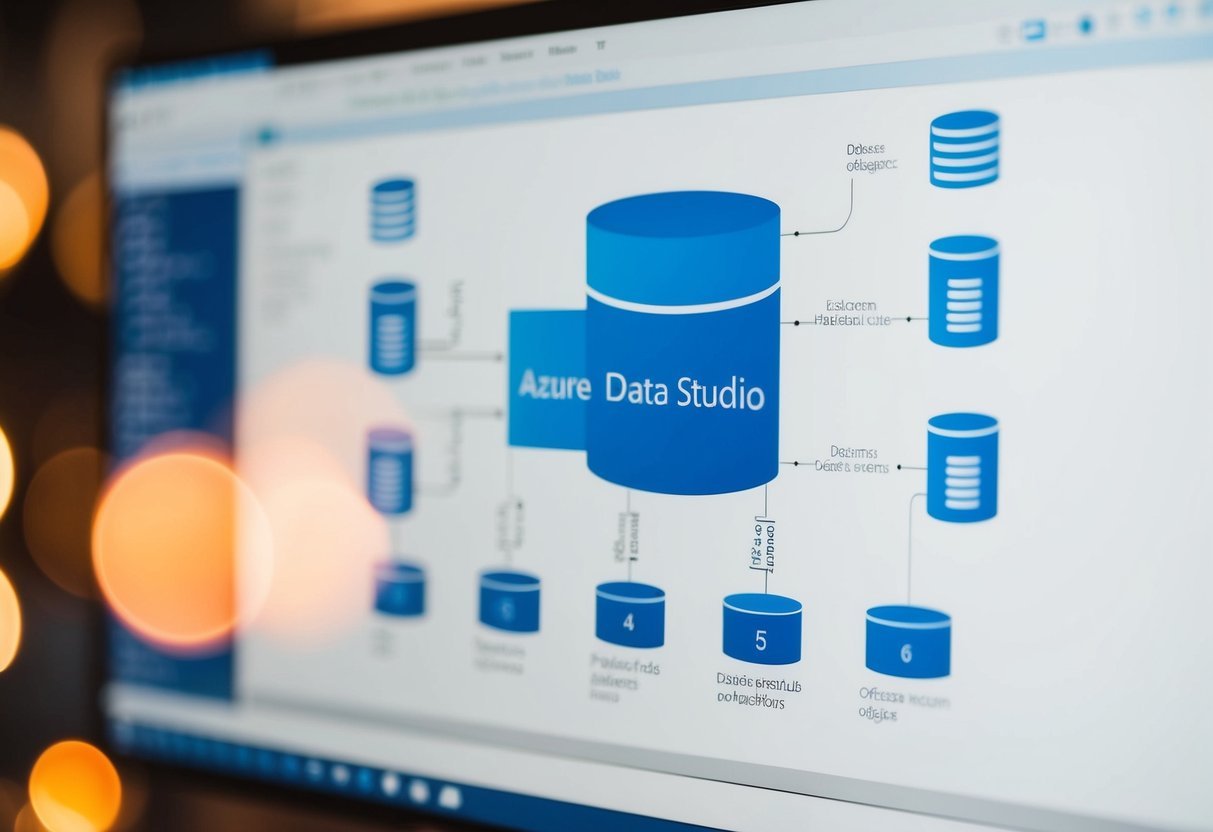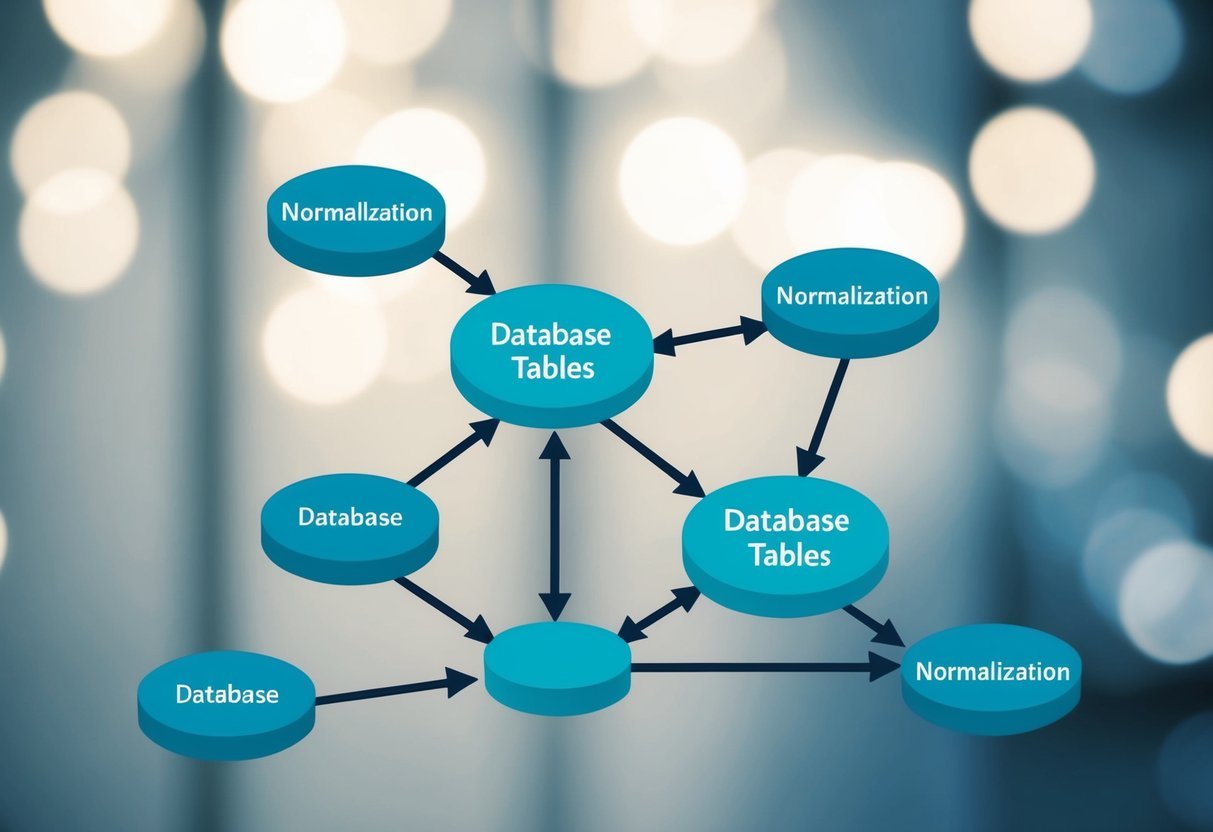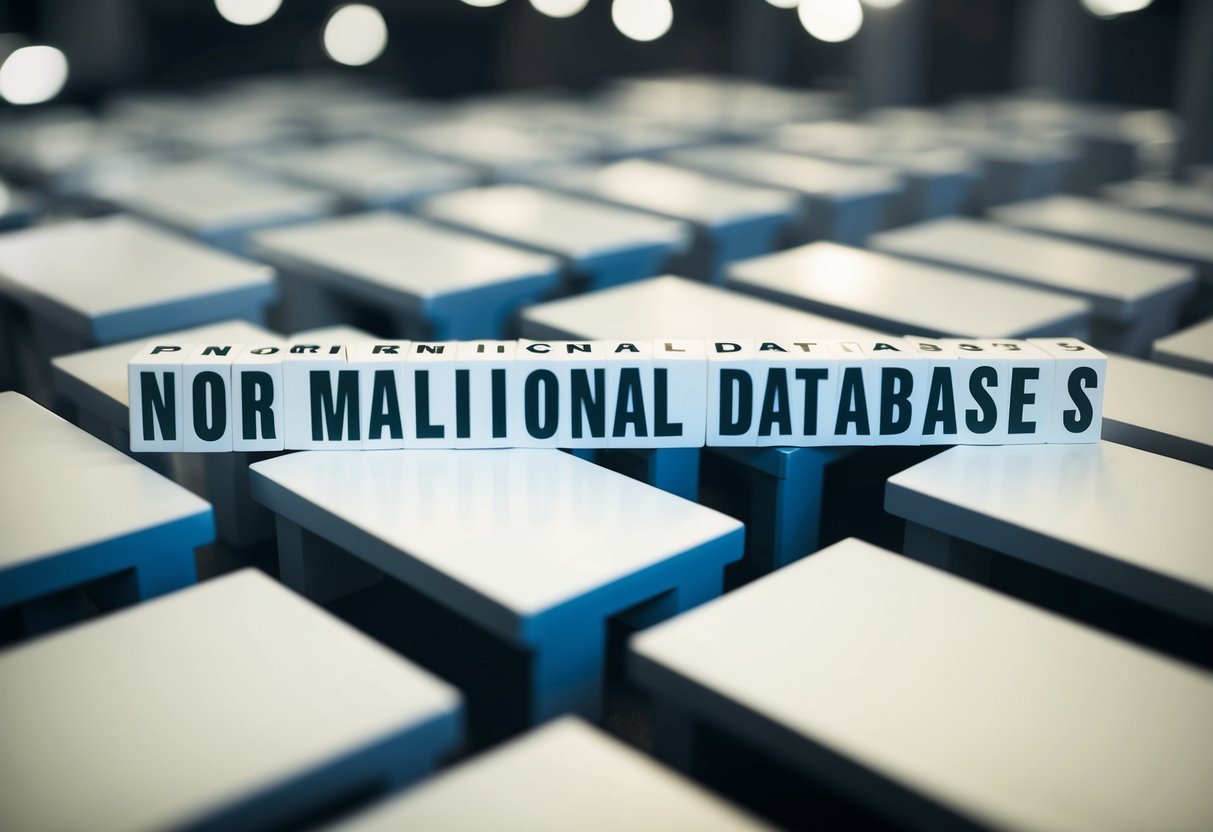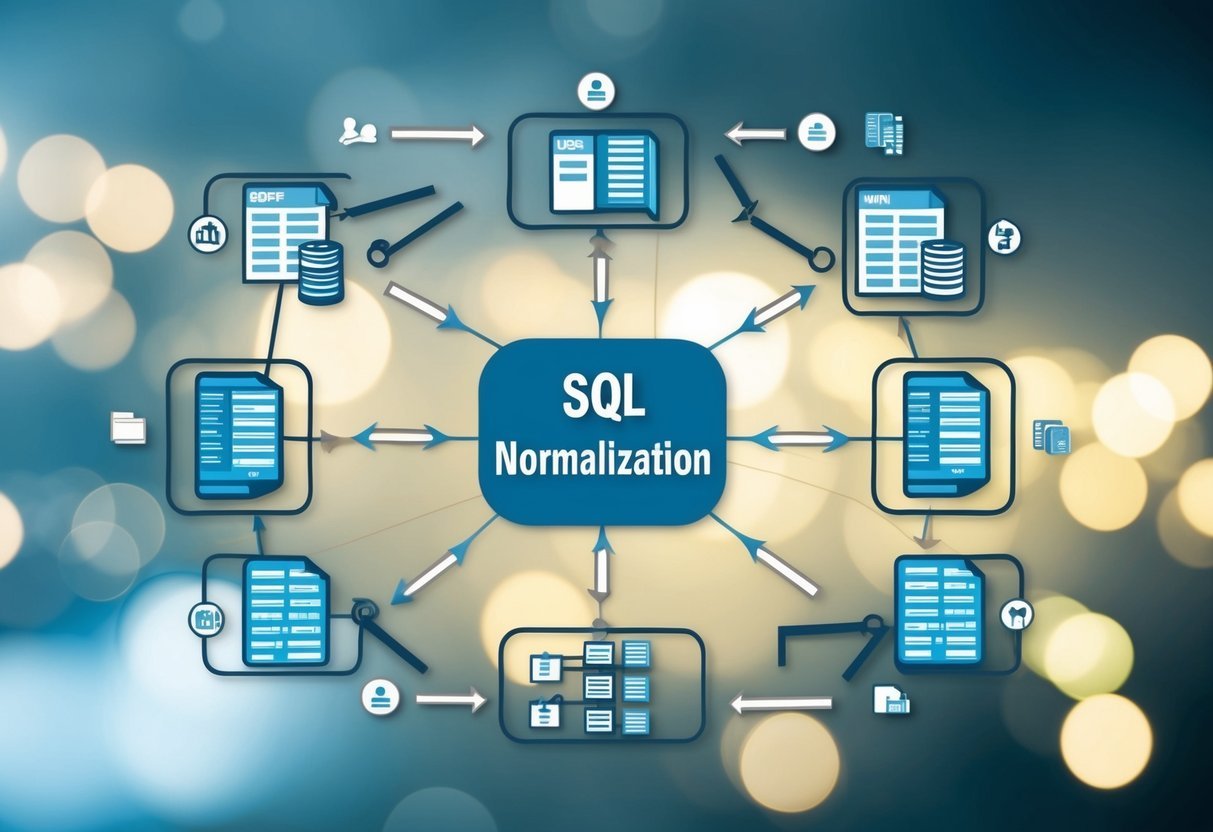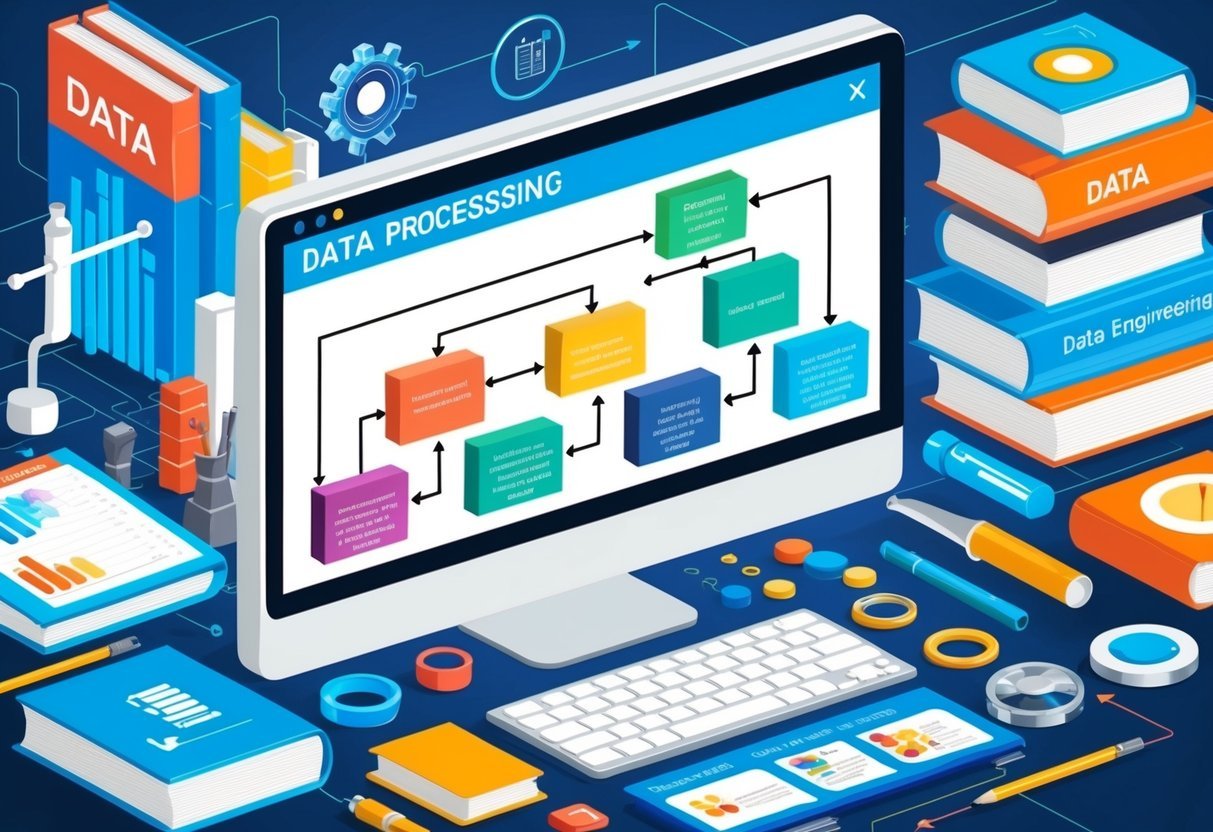Understanding T-SQL and SQL Server Fundamentals
T-SQL is a language used to interact with databases. It is an extension of SQL, providing extra features like procedural programming and variables. These features allow for complex transactions and operations within a relational database management system (RDBMS).
SQL Server is a popular RDBMS that uses T-SQL as its primary language. It manages data in a structured way, ensuring efficient data retrieval and storage. SQL Server is widely used in businesses for managing large databases safely and reliably.
When working with databases, it’s essential to know basic concepts such as tables, rows, and columns.
Tables store data in rows, with each row representing a single record. Columns define the type of data stored.
One of the main tasks in database management is ensuring data security. T-SQL offers commands for setting permissions and access controls. This is crucial to protect sensitive information from unauthorized access.
A simple T-SQL command for retrieving data is the SELECT statement. This statement can be used to query specific columns from a table.
SELECT column1, column2 FROM table_name;
Studying these fundamentals helps users effectively manage and interact with database systems. For more advanced understanding, the concepts in Microsoft’s SQL Server 2012 T-SQL Fundamentals are highly recommended. They provide in-depth knowledge for both beginners and experienced users.
Authentication in SQL Server
In SQL Server, authentication is crucial for database security. It involves verifying the identity of a user or system before granting access to resources. Two common methods are Windows Authentication and SQL Server Authentication.
Windows Authentication
Windows Authentication uses the user’s Windows credentials to access SQL Server. This method integrates with the Windows security model, which means it benefits from network security features such as Kerberos. No separate SQL Server password is needed, reducing the risk of password breaches.
Administrators prefer this method for its ease of use and centralized management. It ensures uniform security policies across the network. Moreover, it supports automatic login, enhancing user convenience and maintaining security.
Benefits of Windows Authentication include:
- Integrated Security: Uses domain credentials.
- No Password Synchronization: Relies on Windows passwords.
- Stronger Security Measures: Leverage existing network security protocols.
SQL Server Authentication
SQL Server Authentication requires separate login credentials specific to SQL Server. Users must provide a username and password to connect. This method is useful in environments not fully integrated with Windows or in mixed operating system setups.
It allows flexibility as users do not need a Windows account. This is beneficial for external users or applications that access the database without a Windows domain. However, maintaining security with SQL Server Authentication demands strong password policies and regular updates.
Considerations include:
- Separate Credentials: Requires unique SQL account.
- Greater Administrative Burden: Need to manage passwords.
- Potential Security Risks: If passwords are weak, there is a higher risk.
Both authentication methods offer distinct advantages for different scenarios. Proper implementation ensures secure access to SQL Server environments.
Authorization and Role Management
Understanding the main aspects of authorization and role management in T-SQL is crucial for maintaining database security. This involves specific roles that determine what actions users can perform on the database. These roles help control access and ensure that users only have privileges that match their responsibilities.
Fixed Server Roles
Fixed server roles in SQL Server are predefined roles designed to provide specific permissions broadly across the entire server. They simplify management by grouping common privileges under a single role.
An example is the sysadmin role, which grants complete control over all server activities.
Other important fixed server roles include securityadmin, which allows user permission management, and serveradmin, which handles server-wide configuration.
These roles are essential for effective server administration, as they help to assign and manage permissions consistently across multiple databases.
Fixed Database Roles
Fixed database roles apply to individual databases, granting specific permissions necessary for database-level tasks.
The db_owner role has complete database management authority, similar to sysadmin at the server level. This role allows users to perform any activity at the database level, including schema design and data manipulation.
Alternative roles include db_datareader, allowing reading of all data within the database, and db_datawriter, permitting data modification.
These roles ensure that access permissions are appropriate to the user’s responsibilities, helping to maintain efficient and secure database operations.
Custom Role Definitions
Custom role definitions allow for tailored permission settings that are not covered by fixed roles. This flexibility is vital for unique organizational needs, enabling database administrators to create roles that match specific job functions and security policies precisely.
To define a custom role, administrators can use T-SQL to specify the exact permissions and targets.
This might include permissions for creating tables, executing stored procedures, or managing user accounts.
Custom roles thus offer granular control, ensuring that users can perform their roles effectively without being granted unnecessary permissions.
Implementing Database Security Policies
Implementing database security policies is crucial for maintaining data integrity and privacy. These policies define rules and permissions to ensure only authorized users access sensitive information.
A strong security policy involves several key components.
Regularly updating security measures and performing audits help identify vulnerabilities. Database administrators often use Role-Based Access Control (RBAC) to manage permissions effectively.
Encryption is another essential tool. It protects data by converting it into a secure format, especially important for data transmitted over networks.
Monitoring and logging database activities are vital for detecting suspicious behavior. By recording actions, it becomes easier to track unauthorized access attempts and take necessary actions quickly.
Implementing security policies also means considering privacy statements. These statements inform users about data collection and usage, ensuring transparency and compliance with legal standards.
Here’s a table summarizing important components for database security:
| Component | Description |
|---|---|
| RBAC | Manages user permissions |
| Encryption | Secures data through coding |
| Monitoring | Tracks database activities |
| Privacy Statement | Educates users about data handling |
Ensuring that all these elements are in place can significantly reduce the risk of data breaches. Administrators need to stay informed about the latest security threats and adapt their policies accordingly. They play a pivotal role in safeguarding the organization’s data and maintaining trust with users.
User Management and Permissions
User management and permissions are crucial for maintaining database integrity and security. It involves creating and managing user accounts, assigning permissions, and resolving issues like orphaned users.
Creating and Managing Database Users
Database users are the individuals or applications that interact with a database. These users need specific credentials to access the system.
Creating a user involves defining a username and setting a secure password. Administrators assign users with the necessary permissions to perform their tasks.
Managing users includes modifying or removing accounts as needed. The command DROP USER can be used to remove unnecessary users. Care should be taken when removing users to avoid affecting database access unexpectedly.
Granting and Revoking Access
Granting access means providing users with the permissions they need to interact with the database.
This can include read, write, or execute permissions at the database level. These are usually handled with SQL commands like GRANT and REVOKE.
Using these commands allows administrators to ensure the right users have the necessary access while maintaining security.
It is important to regularly review permissions to adapt to any changes in user roles or responsibilities.
Handling Orphaned Users
Orphaned users occur when database users are not linked to a valid login. This can happen if a login is removed or changed without updating its associated database users.
Resolving orphaned users involves identifying them with query commands and correcting their links.
Using SQL tools like ALTER USER or DROP LOGIN, administrators can address these orphaned accounts. Keeping track of logins and their associations with database users is essential in preventing and resolving orphaned users efficiently.
Protecting Data with Encryption
Ensuring data security in SQL Server is crucial. Two commonly used methods are Transparent Data Encryption (TDE) and Column-Level Encryption. Each method offers unique benefits and serves distinct purposes, allowing users to protect sensitive information effectively.
Transparent Data Encryption
Transparent Data Encryption (TDE) helps secure databases by encrypting data at rest. This means the entire physical database file, including log files, is encrypted without requiring changes to existing applications.
TDE uses an encryption certificate and key, which secure the data and prevent unauthorized access.
SQL Server handles encryption and decryption automatically, making it invisible to users.
This feature is particularly beneficial for compliance requirements as it encrypts backups, enhancing protection against unauthorized recovery attempts.
TDE is a robust choice for organizations needing to secure data without modifying applications.
Column-Level Encryption
Column-Level Encryption targets specific columns in a database table. This method is ideal for encrypting sensitive data, like credit card numbers and social security numbers, while leaving other data untouched.
Implementing this encryption involves using functions like ENCRYPTBYKEY and DECRYPTBYKEY in Transact-SQL.
Unlike TDE, Column-Level Encryption requires developers to modify database schemas and application code to handle encryption and decryption manually.
This method offers greater control over which data elements are encrypted. However, it may impact performance, particularly in large databases. Despite the complexity, it is an effective strategy for ensuring that specific, sensitive data remains protected.
Data Privacy Considerations
Data privacy is crucial in database management and involves understanding privacy statements and managing cookies efficiently. These elements protect personal information and affect how online activity and personalized advertising are handled.
Understanding Privacy Statements
Privacy statements are documents that detail how a company collects, uses, and protects personal data. They are essential for informing users about what data is being gathered.
These statements include specific information such as data usage, storage methods, and the security measures in place. Transparency in these statements builds trust with users.
They help ensure compliance with regulations like GDPR.
Companies should update their privacy statements regularly to reflect any changes in data management policies. Doing so helps users feel informed about their personal data.
Cookie Management
Cookie management is essential for maintaining user privacy.
Cookies are small files stored on devices that track online activity. They can be classified into several types, including mandatory and optional cookies.
Managing third-party cookies is crucial since they are often used for personalized advertising.
Users can adjust their settings to block such cookies.
It’s advisable for websites to inform users about the cookies they use and offer options to manage them.
Users should be able to easily reject or choose only necessary cookies for the best privacy experience. Allowing users control over these settings enhances their trust and protects personal data.
Working with Database Objects
Database objects are crucial components in managing and securing data. This involves creating and managing objects, as well as ensuring secure access to them. These tasks are often implemented using tools like SQL Server Management Studio (SSMS).
Creating and Managing Objects
Creating database objects is an essential skill in working with SQL databases. Objects include tables, views, indexes, and stored procedures.
In SSMS, users can easily create these objects through the graphical interface or T-SQL scripts. For example, a table can be created with specific columns and data types.
Managing these objects involves tasks such as updating structures, modifying indexes, and maintaining relationships. Regularly checking the performance and usage of these objects ensures they meet the database requirements.
Effective management also includes backing up objects and monitoring their health using SSMS tools.
Securing Access to Objects
Securing database objects is critical for protecting data integrity and privacy. Access control is implemented through permissions and roles.
In SSMS, administrators can assign specific rights to users, allowing them to perform only the necessary actions on database objects. This means defining who can read, write, or modify specific data.
Another aspect of security involves encrypting sensitive data. It ensures that even if unauthorized access occurs, the data remains unreadable.
Regular audits and reviews of security policies help maintain a secure environment. By using SSMS, these security settings can be managed efficiently, enabling administrators to quickly implement changes when needed.
Advanced Security Features
Implementing robust security features in databases is crucial for protecting sensitive data. Two important elements are Row-Level Security and Dynamic Data Masking. These techniques help control access and visibility of data within a database, enhancing overall security.
Row-Level Security
Row-Level Security (RLS) allows database administrators to control access to rows in a table based on user identities. This feature ensures users see only the data relevant to them without altering application code.
With RLS, security policies are defined using predicates that filter rows at query time. For example, managers can access their team’s data only.
It’s particularly valuable in multi-tenant applications where data separation is essential.
Implementing RLS involves creating security policies and functions, ensuring data visibility aligns with individual roles.
RLS simplifies security management by centralizing access control within the database. It reduces the need for extensive code changes in applications.
Users experience seamless and secure access without knowing the complexities behind the scenes.
Dynamic Data Masking
Dynamic Data Masking (DDM) limits sensitive data exposure by masking it at query time. Users see only partial or obfuscated data, protecting valuable information like credit card numbers or social security numbers.
DDM is configured at the column level. Administrators define mask patterns based on security needs.
This technique helps comply with privacy regulations, allowing safe data sharing across different departments or user roles. For example, displaying only the last four digits of a credit card number.
Implementing DDM does not require changes to database schema or client applications.
It helps organizations prevent unauthorized access while delivering accurate, non-sensitive data to users. DDM enhances security, making it easier to manage data privacy and comply with regulations.
Maintaining SQL Server Security
SQL Server security is vital for protecting data and ensuring smooth operations. There are several key practices to help maintain it effectively.
Use Authentication and Permissions:
SQL Server supports both Windows authentication and SQL Server authentication. Windows authentication is generally more secure because it uses Active Directory.
Assign permissions wisely, granting specific users only what they need.
Encrypt Data:
Data encryption is crucial. SQL Server offers features such as Transparent Data Encryption (TDE) to protect data at rest and Secure Sockets Layer (SSL) for encrypting data in transit.
Regular Updates:
Regularly update SQL Server to patch security vulnerabilities. Keeping the server up-to-date helps protect against new threats.
Monitor Access and Logs:
Use SQL Server’s auditing features to track who accesses the database. Regularly review these logs for any suspicious activity that might indicate a security breach.
Backups and Recovery:
Frequent backups are essential for data security. Ensure backups are stored securely and test recovery procedures regularly to prevent data loss during incidents.
Implement Network Security:
Network security, including firewalls and secure network configurations, helps protect SQL Server from unauthorized access. Limit access to the SQL Server through trusted IP addresses only.
These practices strengthen SQL Server security and protect valuable data. It requires consistent monitoring and adaptation to new security challenges.
Security Best Practices and Auditing
Database security is vital for protecting sensitive data. Implementing best practices ensures that databases are secure against unauthorized access and data breaches. Regular audits help in identifying vulnerabilities.
Use Strong Passwords:
Enforce complex password requirements for all database accounts. Change passwords regularly to minimize security risks.
Enable Encryption:
Encrypt data both at rest and in transit to prevent unauthorized access. Using T-SQL, administrators can set up encryption protocols for added protection.
Implement Access Controls:
Limit access to sensitive information through role-based permissions. Only essential personnel should have access to critical data.
Conduct Regular Audits:
Regularly audit database activities using tools like SQL Server Management Studio. Audits help detect suspicious activities or policy violations.
Set up audit specifications for different databases, as outlined in a guide on setting up server audit specifications.
Monitor Data Changes:
Use triggers in T-SQL to track changes. Triggers log edits and deletions, essential for maintaining data integrity.
More about T-SQL triggers can be found in the KSU database security and auditing PDF.
Back Up Data:
Regular backups are crucial. Store backups securely and test recovery processes regularly to ensure they work when needed.
Update Software:
Keep database management systems updated with the latest patches. This reduces the risk of exploits targeting outdated software.
Social Media Connections:
Be cautious about sharing database information over social media platforms. Connect with trusted and verified accounts only, minimizing potential security threats.
Applying Security Updates and Patches
Applying security updates and patches is a critical practice in computer science. These updates help protect databases from vulnerabilities and potential attacks.
Regularly updating databases ensures that security measures are current. Keeping software updated reduces the risk of exploitation by cyber threats.
Patch management involves identifying, acquiring, and applying patches. This process can be automated using patch management systems. Automation saves time and minimizes human error.
It is essential to prioritize updates according to their severity. High-risk vulnerabilities should be patched immediately to prevent possible breaches.
Create a schedule for regular updates and backups. This ensures minimal disruption and maintains system integrity.
| Task | Frequency |
|---|---|
| Critical Updates | Immediately |
| Regular Updates | Weekly or Monthly |
| System Backups | Before Major Updates |
Testing patches in a controlled environment is recommended. This helps identify potential issues before deploying them to live systems.
Communication within teams is vital. Everyone should be aware of updates and any changes they might bring.
Keeping track of updates and patches through detailed documentation is important. This provides a clear history of actions taken to secure the database.
Incorporating effective patch management strategies helps in building a robust defense against potential threats. Applying security updates and patches is not a one-time task but an ongoing process that ensures the safety and reliability of database systems.
Frequently Asked Questions
Database security involves several key practices and measures such as establishing security roles, configuring secure environments, and using specific security measures in SQL Server and Azure SQL databases. Implementing these effectively requires adherence to established principles and checklists.
What are the essential security best practices for SQL Server?
Ensuring SQL Server security starts with strong authentication and access controls. Regularly update and patch the server to protect against vulnerabilities.
Utilize firewalls and network security groups to limit access. Implement encryption for sensitive data and monitor server activity for unusual patterns. Consider using encrypted connections to enhance protection.
How do SQL Server security roles contribute to database protection?
SQL Server security roles help manage who can access and modify data by defining specific permissions. Roles such as sysadmin, db_owner, and db_datareader provide different levels of access.
Assign roles based on the principle of least privilege, ensuring that users have only the permissions necessary to perform their tasks.
What are the primary types of database security measures implementable in SQL Server?
Several key measures include encryption, authentication, and access controls.
Encryption methods such as TDE (Transparent Data Encryption) protect data at rest. SQL Authentication and Windows Authentication ensure secure login processes.
Role-based access control (RBAC) allows precise user permissions, while auditing provides a record of access and changes.
Could you provide a checklist for securing an Azure SQL Database?
When securing an Azure SQL Database, first configure firewall settings to restrict access. Use Azure Active Directory for centralized identity management.
Enable auditing and threat detection to monitor activities. Apply advanced data security protections like encryption.
Examine and apply the latest updates and patches regularly for optimal security.
What principles should guide the configuration of a secure SQL Server environment?
Key principles include the principle of least privilege, ensuring minimal permissions are granted to users and applications.
Ensure proper segmentation of networks to reduce risk exposure. Applying security patches promptly and regularly, conducting continuous monitoring, and using encryption for sensitive information are foundational practices.
How does one effectively implement database security in T-SQL?
To implement database security in T-SQL, you should start by writing scripts. These scripts will ensure that only authorized users can access or modify data. Use T-SQL to configure roles and permissions systematically. You should also encrypt sensitive columns within tables using TDE or column-level encryption. Lastly, write triggers to monitor data changes and help detect unauthorized actions.

